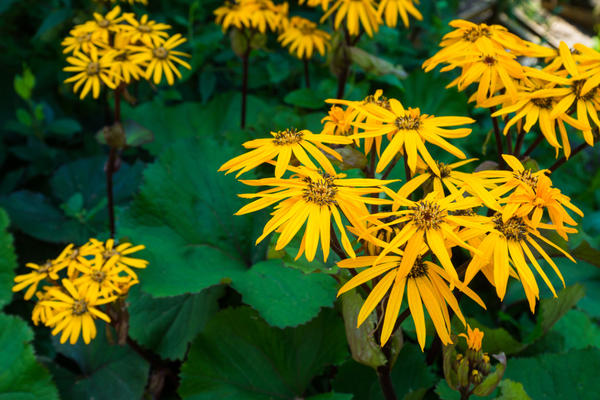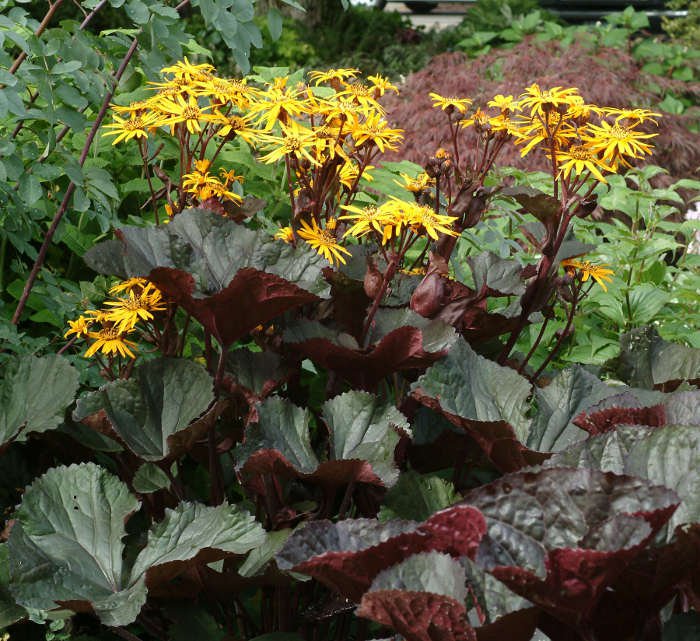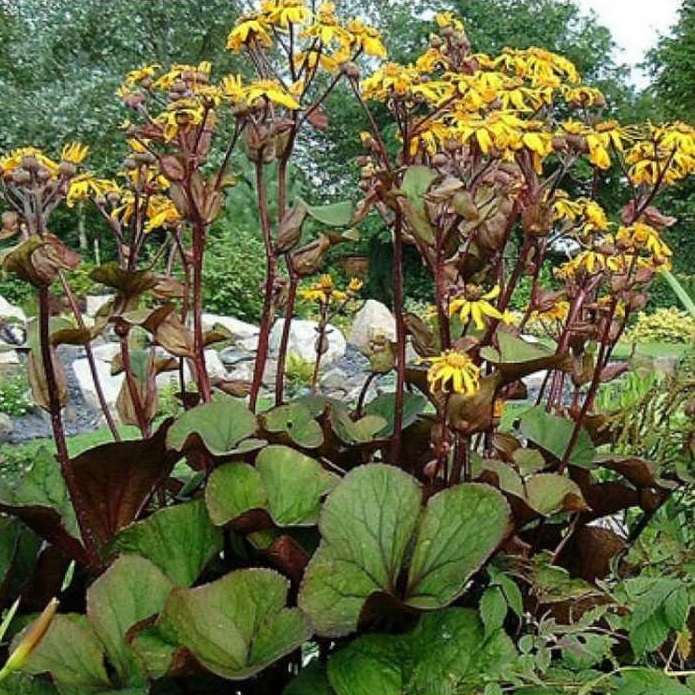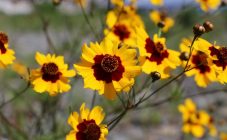Content:
Buzulnik is a perennial herb that belongs to the Asteraceae or Asteraceae family. Another name for the culture is ligularia. Translated from Latin it sounds like "tongue".
Natural habitat - Southwest China, also found in Asia, southern Europe. In Russia (mainly Central Asia, the Far East, the Caucasus), Siberian buzulnik grows next to lakes, streams, on swampy damp meadows.
The plant has unusual leaf shapes, bright flowers of sunny colors. There are more than 160 varieties of buzulnik in the world. The most popular of these are the Othello and Desdemona varieties.
Buzulnik Othello: description
- The bush is 90 centimeters high.
- The leaves are large (50 cm long), glossy, dark green above, have a characteristic purple tint. The underside is purple with reddish veins.
- Petioles are dark red. The flowers are large (diameter 13 cm), chamomile, orange. They are collected in long spike-shaped inflorescences.
- Flowering - early September - October (before the first frost).
Buzulnik Desdemona: description
- Plant of medium growth (height 1 m.).
- The leaves are large (their size is 40 cm). Their outer side is light green and has a bronze tint. The lower surface of the leaf plates is lilac-brown.
- Flowers resemble chamomile, large (10-13 cm), dark yellow. Inflorescences are formed into panicles.
- Bloom (August - October).
Buzulnik serrated Othello and Buzulnik serrated Desdemona practically do not differ in terms of growing conditions. The plant loves fertile, loose, moist, nutrient-rich soils. Although it can grow on heavy clay soils with poor or no drainage. If temporary flooding occurs, the bushes will tolerate it well.
Buzulnik is characterized by good frost resistance. However, in extreme cold, it freezes under, therefore, in regions with cold climatic conditions, it is necessary to shelter it for the winter.
All buzulniks reproduce in two ways:
- by the seed method;
- dividing the bush (preferably in spring).
Most often, experienced gardeners choose the latter option.
Buzulnik Othello: landing and care
The plant is planted in the fall: the seeds are sown in open ground, the buzulnik will bloom after 3-4 years, in the spring. Seedlings can get early flowering - this year. Comfortable temperature for germinating seeds is + 15-20 degrees. The first method is best.
It is necessary to choose shaded areas for the buzulnik, well protected from the winds, where direct sunlight does not fall. In the shade of trees, buildings, fences, near natural, artificial reservoirs.
Before planting a buzulnik, prepare the soil. Mix humus (bucket), superphosphate (glass), wood ash (2 glasses), (per 1 m2). They dig up the ground to a depth of 30 cm.
Grooves are made 1 cm deep. Achenes are laid out, leaving a distance (1 m) between them.
If young seedlings are planted, they dig out planting holes 40X40 centimeters. Prepare the soil mixture according to the recipe above. Bushes are planted, sprinkled with earth, watered.
Taking care of a buzulnik is quite simple.In the spring, after the shoots appear, they gently loosen, then mulch the ground with peat. Water the plant often, abundantly (every 3-4 days). It is necessary that the ground is constantly moist. In dry hot weather, the bushes are sprayed with water in the morning or evening.
The plant is fed in spring. Use mullein solution or mineral formulations (1:10). Complex fertilizers are taken in the summer. In the fall, after flowering, each humus bush is introduced (half a bucket). He shouldn't get to the roots.
They regularly loosen the ground, mulch with dry peat. Supports are installed so that the plants do not break. Buzulnik has been growing in one place for more than 10-15 years. For rejuvenation, plants take bushes 5-7 years old.
In the fall, dry leaves and flowers are pruned; before the onset of winter, all aerial parts of the plant are cut off. The garden bed is mulched. If the winters are harsh, cover with little snow covering material.
Toothed buzulnik is used in landscape design, it looks great in single plantings or group compositions along the banks of artificial reservoirs, along paths, houses, in flower beds. You can form a whole wall of ligularia bushes. Plants go well with irises, geyher, ferns. They are also planted as a background in flower beds.

















